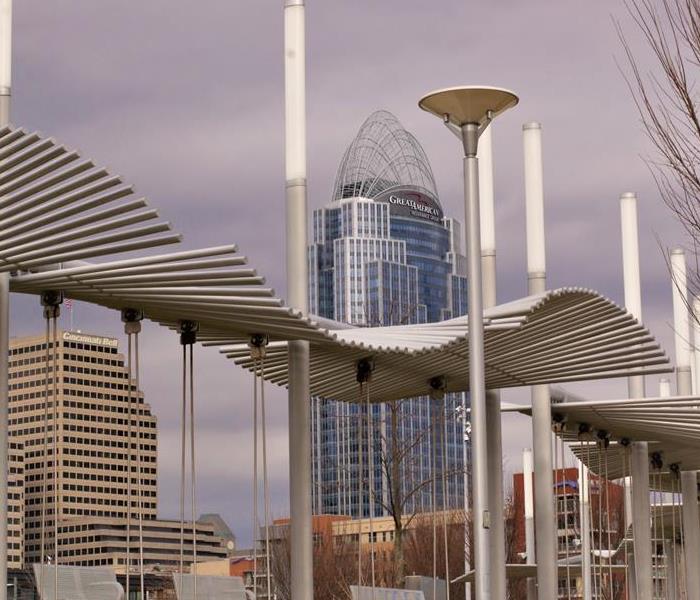Prepare Your Urban Businesses and Homes For Stronger Thunderstorms
6/22/2021 (Permalink)
Have you ever noticed that in downtown Cincinnati or Covington, the temperature feels warmer by 2-5 degrees? It’s no coincidence. It actually is warmer! For centuries researchers have been studying this phenomenon. Scientists call it the Urban Heat Island Effect. Studies have shown that Urban areas like Cincinnati, Bellevue, and Covington have more severe storms because of this anomaly. The population in urban areas is predicted to increase in the coming years. SERVPRO wants to help you prepare your property now to decrease storm damage later.
What is an Urban Heat Island?
Urban Heat Islands, or UHI, are densely populated cities where buildings are built closely together. Generally, these areas have a large amount of surface area made from asphalt, concrete, steel, and other heat absorbent materials. It’s not just the building materials that make a UHI. Activities that create heat like driving, manufacturing, even a person walking can add heat to these tight spaces and raise the temperature. These factors mean the heat is trapped in the landscape. That is what creates the 2-5 degree difference in large cities.
How Does This Effect Create Stronger Storms?
There is more to a UHI than the temperature differential. The climate inside these areas is actually different. Nasa explains the reason behind this difference best, “increased temperature may provide a source of unstable air. If air over a city is warmer than the air surrounding it, it wants to rise. As the city-warmed air rises, it cools and forms rain-producing clouds that soak the area downwind.” These factors potentially create more severe weather than what might occur in the neighboring suburbs and rural areas.
Meteorologynews.com quotes Climatologist Dev Niyogi of Purdue University in Indiana, who believes, “As we are becoming bigger and bigger in terms of our urban footprint, there’s a distinct probability we are going to see cities have their own weather patterns.” For Cincinnati and Northern Kentucky, this means higher river levels and more frequent flooding.
Protecting Your Property From Storm Damage
The best thing you can do to protect your property from storm damage is to click here for maintenance suggestions. These tips can help prevent storm damage altogether or reduce the damage to your property. Scientists believe there is more than maintenance required to reduce property damage. Changes to how we use our urban spaces are also necessary. It is possible to reverse the effects of a UHI by taking these steps.
- Add Greenspaces
- Part of the problem with UHIs is the lack of plant life in downtown areas. Businesses and homeowners can help by planting gardens on their roofs. Sometimes roof gardens aren't possible. Your home or business may have a peaked roof or no roof access at all. Consider replacing lawn or concrete with a native garden bed instead.
- Plant Trees
- The EPA explains, “Trees shade buildings to directly reduce cooling energy demand by blocking the sun's radiation. Indirectly, trees use solar energy to release moisture into the atmosphere in the form of water vapor, which has an additional cooling effect.”
- Use light colors on your roof and ground cover.
- Dark surfaces absorb and hold onto the sun’s rays at a higher rate than lighter surfaces. Painting a roof white can reflect the light and decrease the heat absorption better than a black roof.
Should a large storm hit your home or business give SERVPRO a call. Our elite large-loss specialists are prequalified and strategically positioned throughout the United States to handle any size disaster.

 24/7 Emergency Service
24/7 Emergency Service
